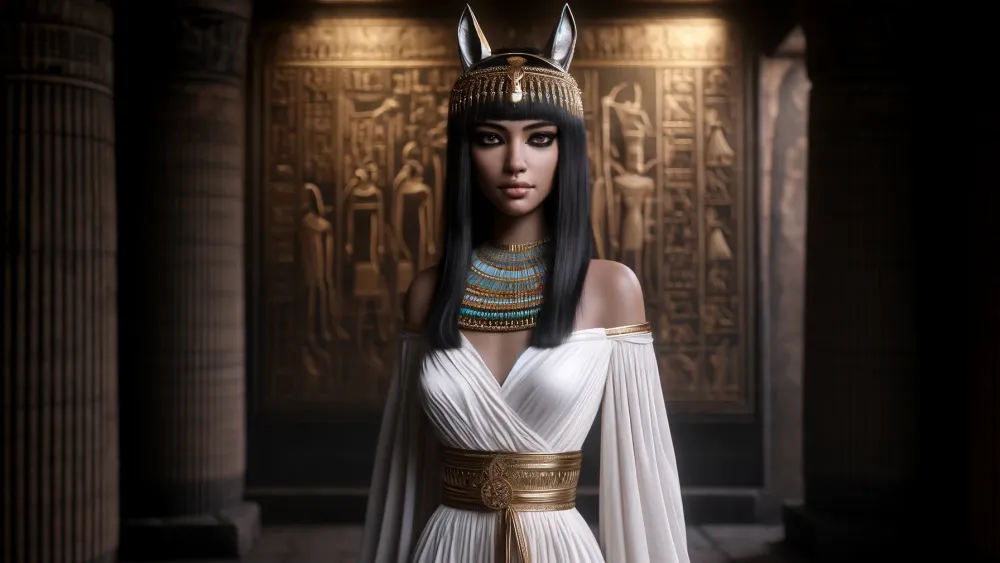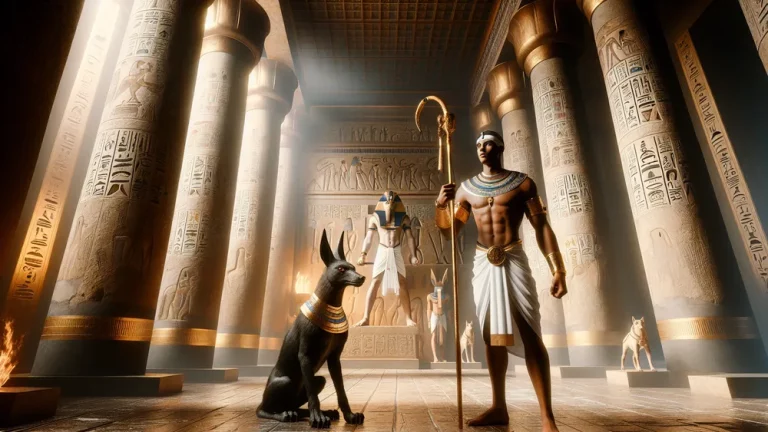Anput: Ancient Egyptian Goddess And Anubis’ Wife
You know, in the vast world of ancient Egyptian myths, Anput often gets overlooked. She’s usually in the shadow of her more famous hubby, Anubis. But here’s the thing: Anput is super important too! She’s not just any goddess; she’s all about mourning and protecting those who’ve passed on. Imagine guiding souls through their afterlife journey – pretty intense, right?
Key Points:
- Anput is an ancient Egyptian goddess of mourning and protector of the dead.
- She is the wife of Anubis, the god of mummification and the afterlife.
- Anput’s symbols include the jackal and she is often shown with a jackal head in art.
- She plays a crucial role in guiding souls through the afterlife and comforting the grieving.
- Anput influences ancient Egyptian burial customs and is linked to Osiris and Isis.
- Worship of Anput involved offerings, prayers, and specific funerary rituals in temples.
- Anput’s role in mythology includes assisting in the Weighin of the Heart and the Osiris myth.
This post dives into everything you need to know about Anput – from her origins and special roles to how she teams up with Anubis and influences burial customs. We’re also going to check out her symbols, worship practices, and some cool stories involving her. By the end of this read, you’ll see why this lesser-known goddess deserves a spotlight in ancient Egypt’s divine lineup. Ready? Let’s get started!
Anput: Overview and Key Facts
Before we get into the nitty-gritty, let’s check out some quick facts about Anput. This will help set the scene.
| Key Fact | Details |
|---|---|
| Name | Anput (also known as Anupet or Input) |
| Role | Goddess of mourning and protector of the dead |
| Consort | Anubis, the god of mummification and the afterlife |
| Symbols | Jackal, possibly linked to deserts and cemeteries |
| Primary Function | Guiding souls in the afterlife, comforting those who grieve |
| Mythological Significance | Plays a role in funerary practices and rituals |
| Iconography | Often shown as a woman with a jackal head or wearing a special headdress |
| Worship Practices | Honored in temples and through everyday religious activities |
| Cultural Impact | Influences ancient Egyptian burial customs and spiritual beliefs |
| Related Deities | Connected to Anubis (husband), possibly Osiris, among other funeral gods |
Now that we’ve got this snapshot of who she is, let’s dive deeper into her story. Ready? Let’s go!
The Origins and Family of Anput
So, now that we’ve got a quick snapshot, let’s dive into where Anput comes from and who she’s related to in the divine family tree. Ready to meet her mythical relatives? Let’s go!
Anput’s Mythological Background
Anput’s story in Egyptian mythology is pretty fascinating. She pops up as a key figure, especially when it comes to mourning and protecting the dead. You might wonder, where does she come from? Well, she’s often seen as Anubis’ female counterpart (you know, the god who handles mummification). Her creation story isn’t super detailed like some other gods’, but we do know she plays a big role in funerary practices.
Interestingly, Anput is linked to Osiris and Isis (the power couple of the afterlife world). This connection makes her part of an important divine family. Moreover, she’s associated with jackals – those animals you see hanging around cemeteries – which ties her even more to themes of death and burial.
So yeah, while her origins are a bit mysterious, her place in mythology is all about guiding and protecting souls on their journey beyond this life.
Anput’s role in Egyptian mythology revolves around guiding and protecting souls after death, linking her to key figures and themes in funerary practices.
Anput and Anubis: A Divine Partnership
Anput and Anubis make quite the team in Egyptian mythology. As husband and wife, they share some pretty important duties. You know how Anubis is all about mummification and guiding souls to the afterlife? Well, Anput backs him up by being a goddess of mourning and protection.
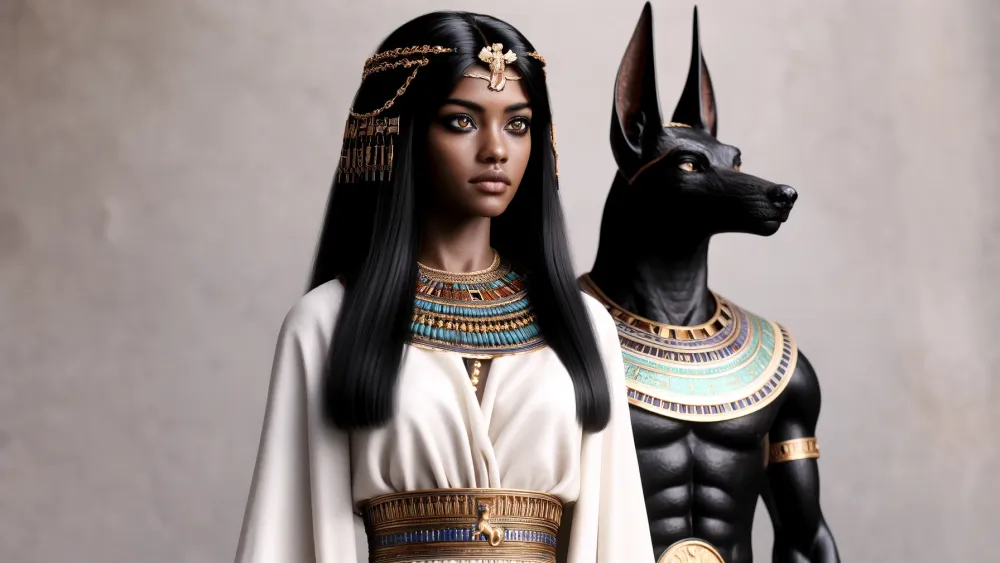
Their partnership means that when someone dies, they get both proper rites from Anubis and safe passage thanks to Anput. Interestingly, while Anubis handles the embalming process (making sure everything’s done right), Anput protects the dead from any bad spirits during their journey. This teamwork shows just how crucial balance is in their roles. Moreover, it highlights how cooperation helps them keep funerary practices sacred.
The Role and Significance of Anput
So, we’ve talked about Anput’s background and her special bond with Anubis. Now, let’s jump into her specific roles and why she’s such a big deal in Egyptian mythology.
Anput as a Goddess of Mourning
Anput plays a big role as the goddess of mourning in ancient Egyptian mythology. She takes care of funerary practices and rituals, making sure everything’s done right for the deceased. She helps guide souls through the first steps of their afterlife journey. At the same time, she comforts those who are grieving, offering them some divine support to ease their pain.
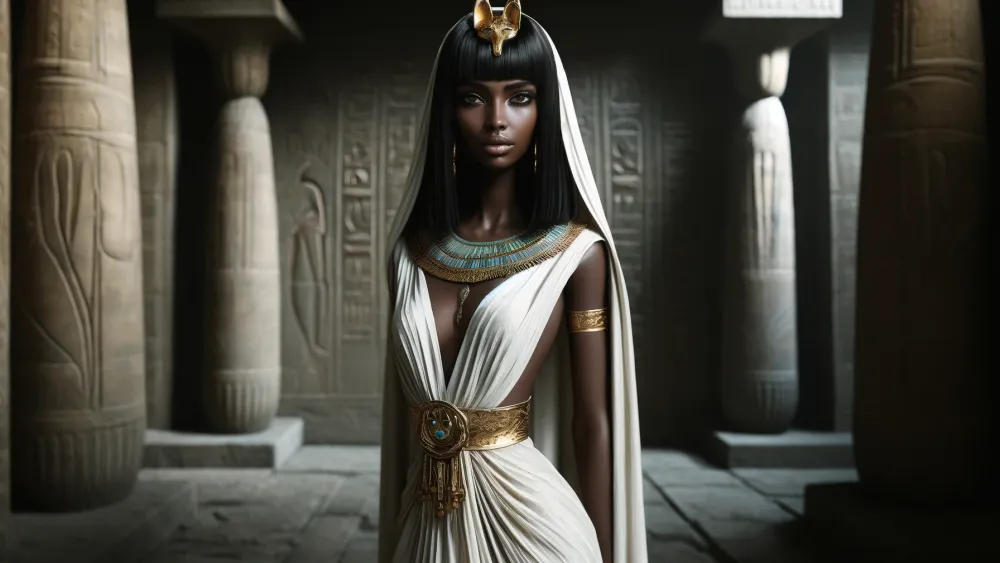
Interestingly, you often see Anput next to Anubis during these rituals (which shows how important her role is). Her presence reminds everyone about honoring the dead and comforting those left behind. By doing all this, Anput keeps sacred traditions alive when it comes to death and what happens afterward in ancient Egyptian culture. So yeah, she’s pretty essential!
Anput is a crucial figure in ancient Egyptian mythology, overseeing mourning practices and afterlife guidance while providing comfort and divine support for the grieving.
Protective Patroness of the Dead
Anput is like a guardian for the dead, making sure they’re safe on their journey to the afterlife. She keeps an eye out for any bad forces that might try to mess with them. Think of her as a protector who stands watch over those who’ve passed away, giving them peace of mind. Interestingly, Anput works closely with Anubis (who handles mummification) to ensure everything goes smoothly.
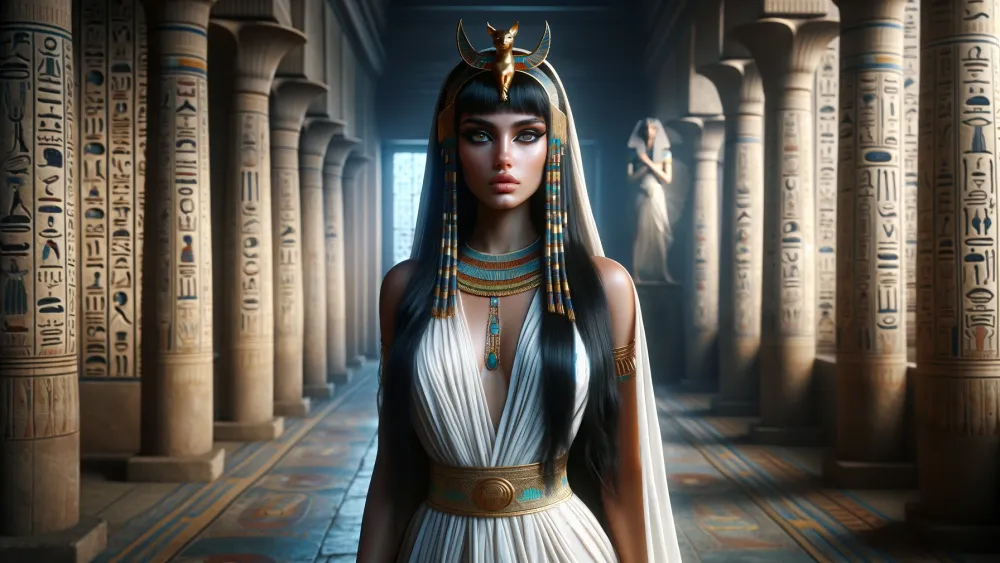
This teamwork shows how important she is in ancient Egyptian funerary practices. They really cared about keeping the deceased safe and sound. Moreover, by doing all this, Anput helps keep things balanced between life and death. She makes sure everyone reaches their final destination without any trouble.
Anput’s Influence on Funerary Practices
Anput has a big impact on how ancient Egyptians handle funerals. They have special rituals and customs just for her. For instance, during mummification (which Anubis oversees), they call on Anput to protect the body from any evil forces. Isn’t that fascinating? Moreover, they include her in burial customs by placing offerings and amulets in tombs. These items are meant to keep protecting the deceased even after they’re buried.
You can also find mentions of Anput in funerary texts and inscriptions, showing how important she is. Interestingly, these practices help ensure that the dead are safe and well-guided into the afterlife. So next time you think about ancient Egyptian burials, remember how much they relied on Anput’s protective power!
Ancient Egyptians heavily rely on Anput for protection and guidance in funerary rituals and customs, which ultimately safeguard the deceased in their afterlife.
Iconography and Symbols of Anput
So, we’ve talked about how Anput fits into funerary practices. Now, let’s check out how she’s shown in ancient Egyptian art and the cool symbols linked to her.
Visual Depictions of Anput
In ancient Egyptian art, you often see Anput as a woman with a jackal head or just hanging out with a jackal (which is her special symbol). She usually wears a long dress and has this cool headdress that includes a uraeus (that’s the rearing cobra thingy showing she’s got power). Sometimes, she holds an ankh or scepter. These items make it easy to spot her in different artworks and carvings.
Interestingly, you’ll also find her in scenes related to funerals, which makes sense given her role. Her look really matches what she does in mythology.
Symbols Associated with Anput
So, let’s talk about the symbols tied to Anput. The jackal is a big one (it stands for protection and guidance for the dead). You also see her with an ankh, which is that cross-like symbol meaning life. This shows her link to the afterlife and taking care of those who have passed on.
Moreover, she often wears a headdress with a uraeus (that’s the cobra standing up), showing she’s got some serious divine power. Sometimes, she holds a scepter, which means she’s in control and has authority. All these symbols together really highlight how important she is in funerary practices and among other gods. Isn’t it cool how each symbol tells us something special about her?
Anput’s symbols, including the jackal for protection and guidance, the ankh for life, the uraeus for divine power, and the scepter for authority, emphasize her crucial role in funerary practices and her significance compared to other gods.
Worship and Cult of Anput
So, we’ve covered her symbols. Now, let’s see how people actually worshipped Anput and where they did it. Ever wondered about her temples or daily rituals? Let’s dive in!
Temples Dedicated to Anput
Interestingly, there aren’t a ton of temples just for Anput, but the ones that exist are pretty special. For instance, in Abydos (a big religious hub back then), there’s a temple complex with shrines for various gods, including Anput.
Here’s where it gets fascinating: people would bring offerings like food and incense to honor her and ask for her protection over their loved ones who had passed away. Moreover, priests performed ceremonies to call on her guidance during funerals. These temples weren’t just places of worship; they were central to community life and rituals.
Can you imagine how important these sites must have been?
Anput’s Role in Daily Life and Religion
In daily life, ancient Egyptians really valued Anput. They showed their respect by giving her offerings like food, drink, and incense (pretty common stuff for religious rituals back then). These offerings were meant to get her favor and protection, especially for those who had passed away. Interestingly, people also said special prayers to ask for her help with funerals.
This makes sense since she’s a guardian of the dead. Moreover, they held festivals just for her! Imagine processions and ceremonies where everyone came together to honor Anput. It was a big deal and let the community show how much they respected her while asking for blessings at the same time.
Stories and Myths Involving Anput
So, we’ve talked about how people honored Anput in their daily lives. Now, let’s jump into some fascinating stories and myths about her. These tales really show what makes her special in ancient Egyptian mythology.
The Tale of Anput and the Weighing of the Heart
In ancient Egyptian mythology, the Weighing of the Heart ceremony is a big deal. So, what happens here? Well, Anubis (the god who handles mummification and afterlife stuff) weighs the heart of someone who has died against the feather of Ma’at (which stands for truth and justice). Interestingly, Anput helps out in this process. She makes sure those scales are balanced just right.
Moreover, she guides souls through this judgment moment, offering support along the way. Imagine it like this: if your heart balances with that feather, you’re good to go into the afterlife. If not? Ammit (a scary creature part lion, hippo, and crocodile) devours it. On top of that responsibility lies Anput’s role in keeping things fair during this crucial test.
Her involvement shows how important she is in making sure everything runs smoothly and justly during such an intense moment for any soul passing through.
Anput plays a crucial role in the Weighng of the Heart ceremony, where she ensures fairness and balance while guiding souls through judgment.
Anput’s Role in the Osiris Myth
In the story of Osiris, Anput has a pretty important job. So, what does she do? When Set (Osiris’s brother) betrays and kills him, things get intense. Anput steps in to help out with the mummification and protection of Osiris’s body. She teams up with Isis (Osiris’s wife) and Nephthys (Set’s wife). Together, they make sure Osiris gets safely to the afterlife.
Interestingly, Anput helps keep bad spirits away from his body. Moreover, she assists in rituals that bring Osiris back to life. Her work shows how vital she is in this myth. It also highlights her interactions with other gods and goddesses. Think about it like this: each deity has their own special role to play. They all come together for a common goal – keeping cosmic order intact!
Anput plays a crucial role in the story of Osiris by assisting in mummification, protecting Osiris’s body, and helping bring him back to life, which emphasizes the importance of her interactions with other deities for maintaining cosmic order.
FAQs
1. How is Anput related to Anubis?
Anput is related to Anubis as his wife in ancient Egyptian mythology.
2. What are the main symbols associated with Anput?
The main symbols associated with Anput include the jackal, which signifies her protective and funerary roles.
3. In what ways was Anput worshipped by the ancient Egyptians?
Anput was worshipped by the ancient Egyptians through offerings, prayers, and specific funerary rituals dedicated to her.
4. How does Anput differ from other Egyptian deities in terms of roles and attributes?
Anput differs from other Egyptian deities in terms of roles and attributes by primarily focusing on mourning and protection of the dead, unlike many deities who govern broader aspects of life and nature.

